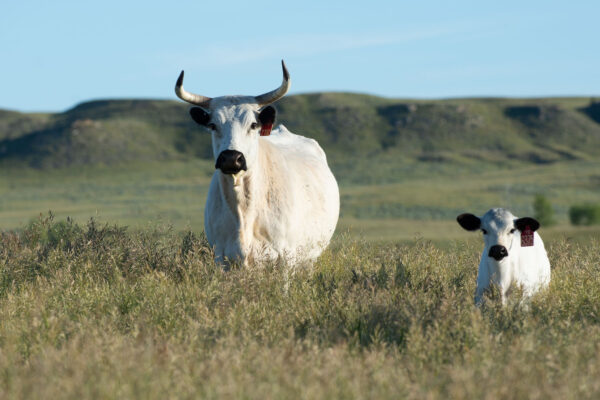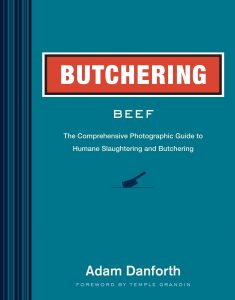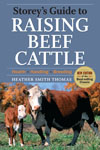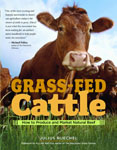
Breed Facts
Status:
Threatened
Use:
Beef
Adult Weight:
1200 – 2000 lbs.
Temperament:
Can be aggressive
Experience Level:
Advanced
Notes:
Ancient feral British cattle; maintain feral streak; athletic; lean; aggressive grazers
Country of Origin:
British Isles
ANCIENT WHITE PARK CATTLE
Horned, white cattle have existed in the British Isles for centuries. They were first mentioned by the Druids/Celts in their early epics and were first documented by the Roman invaders in 39 AD. They were bred for ceremonial use by Druids, and in the centuries that followed, herds used for trophy hunting were scattered throughout England, Scotland, and Wales. Henry III passed legislation in 1225 to enclose some existing “deer parks,” like those at Cadzow, Chartley, Chillingham, Dynevor, and Vaynol that included herds of White Park cattle, though most cattle continued to roam freely.
As their habitat was gradually reduced, the free-roaming cattle disappeared, leaving only the “park” animals as representatives of the ancient type. Blood typing has demonstrated the importance of conserving Ancient White Parks because remarkable genetic distance exists between this breed and all other domestic cattle due to the breed’s long isolation and the limited role of human selection in its evolution.
In 1918, the Park Society was formed to promote these historic cattle; they identified nine herds of horned cattle and six herds of polled cattle in their first herd book. British White cattle were originally included but were reclassified as a separate breed in 1946. Many of the park cattle were eventually re-domesticated, selected for beef production, and crossbred. A few of the herds were conserved as pure stocks and were the foundation strains for today’s Ancient White Park. The breed attracted conservation efforts in the 1970s and became the emblem for the Rare Breeds Survival Trust, a sister organization to The Livestock Conservancy based in the UK.
Ancient White Park cattle came to North America during World War II. Five cows and one bull were shipped to the US as part of a British program that sent national treasures to America for safekeeping. The cattle went first to the Bronx Zoo and then to the King Ranch in Texas, where they were maintained as a closed herd for 40 years. The cattle were dispersed in the 1980s, and several conservation herds were established in the US and Canada. Breeders formed the Ancient White Park Cattle Society of North America to monitor the status of the population which, by 2008, had reached nearly 300 breeding animals. These North American breeders have an important role to play in conserving some genetic variants that are now rare or have disappeared in the British population.
The Ancient White Park breed shouldn’t be confused with the American White Park, a polled beef breed developed in the US after WWII, or the polled, dual-purpose British White. These three populations are quite dissimilar in appearance, history, and use. The original White Park breed is called the Ancient White Park to emphasize its distinctiveness.
Ancient White Park cattle are athletic and lean in appearance. By the age of 4-5 years, cows can weigh from 1200-1800 lbs. and bulls can reach 1800-2000 lbs. The light-colored, black-tipped horns curve out and then up in a wide “u” typically on bulls, or a lyre shape that twists as it grows on many cows. The breed is known for its “white park” color pattern: white with colored “points” (ears, feet, eye rims, muzzles, and teats), and dark skin with possibly some small speckles of black or blue scattered in the coat. A few individuals are born solid black or with red points. Historically, these were culled, though they are being maintained now as a source of additional diversity to the breed.
Although they were used as a triple-purpose breed until around 1914, and there were cows being milked in the Dynevor (UK) herd in 1951 (with moderate yields), they are currently considered a beef breed. Their meat is considered excellent. They are a hardy and adaptable breed, are considered aggressive grazers, and are fertile and easily calve. However, they are not considered a good breed for beginners as they are an active breed that, according to Ancient White Park cattle breeder, Wes Henthorne, require careful handling due to their large flight zone.
Did you know:
The Dominique chicken is America’s oldest chicken breed and was widely raised on farms in the 1800s. Did your grandparents raise “Dominikkers”? Learn more about this beautiful but threatened breed at Dominique chicken – The Livestock Conservancy

Breed Facts
Status:
Threatened
Use:
Beef
Adult Weight:
1200 – 2000 lbs
Temperament:
Can be aggressive
Experience Level:
Advanced
Notes:
Ancient feral British cattle, maintain feral streak, athletic, lean
You may be interested in…




